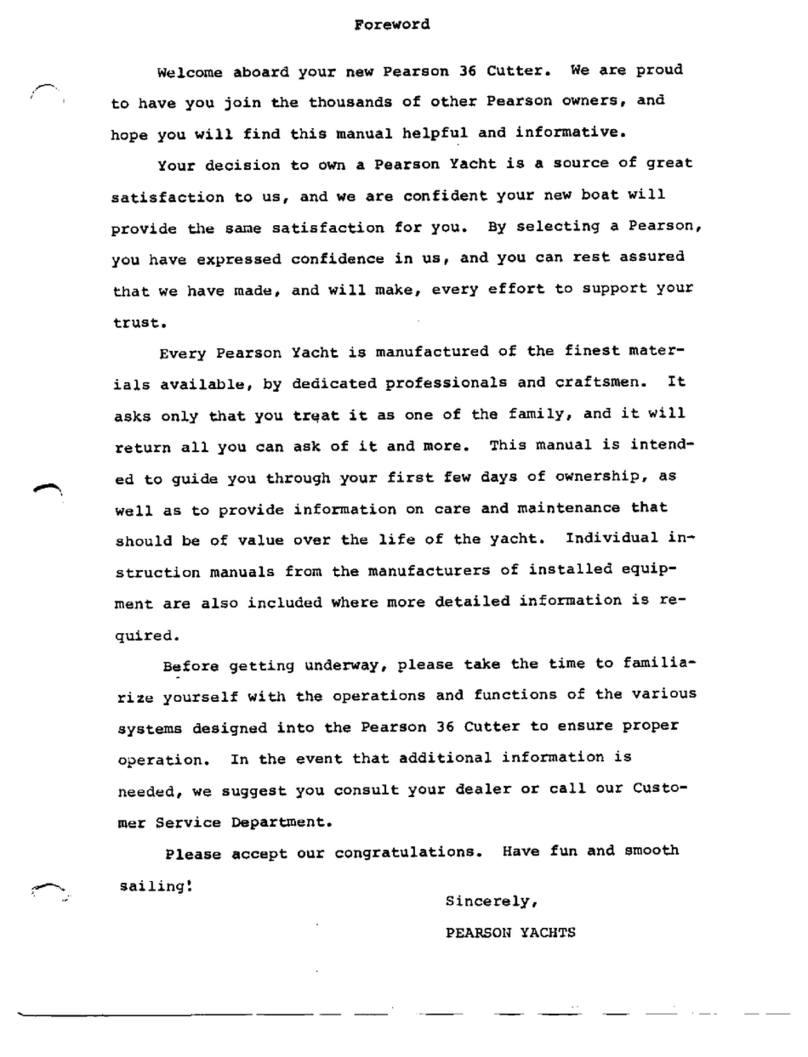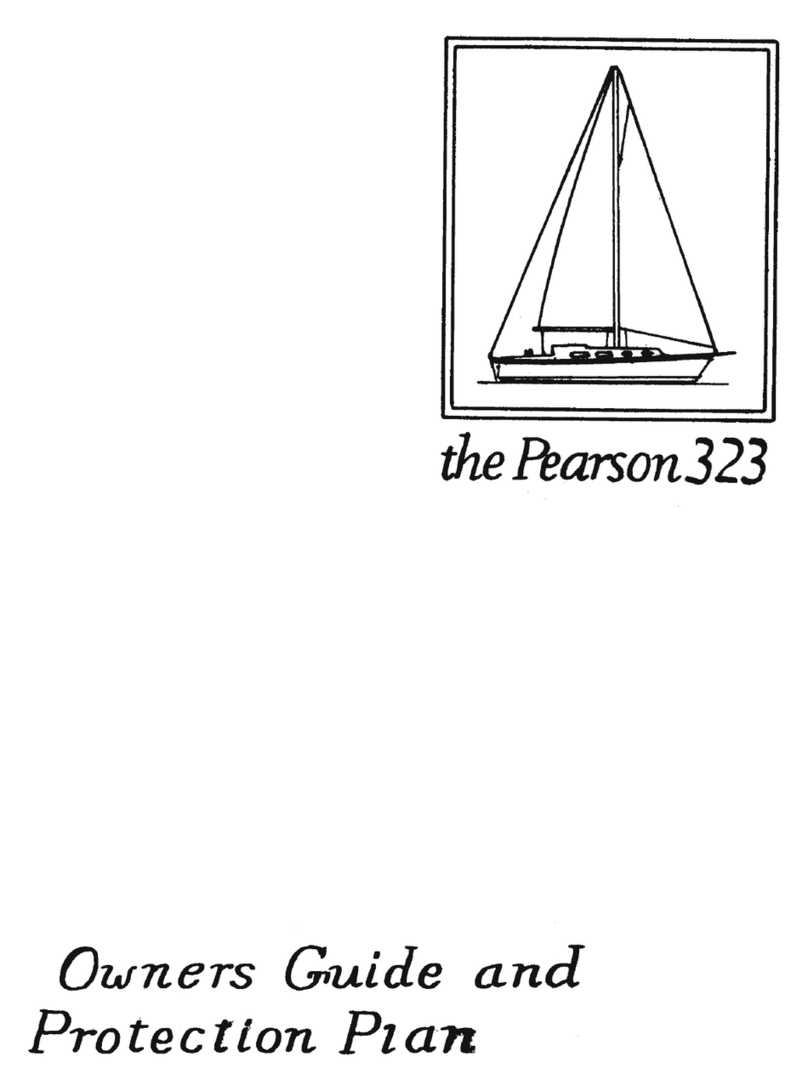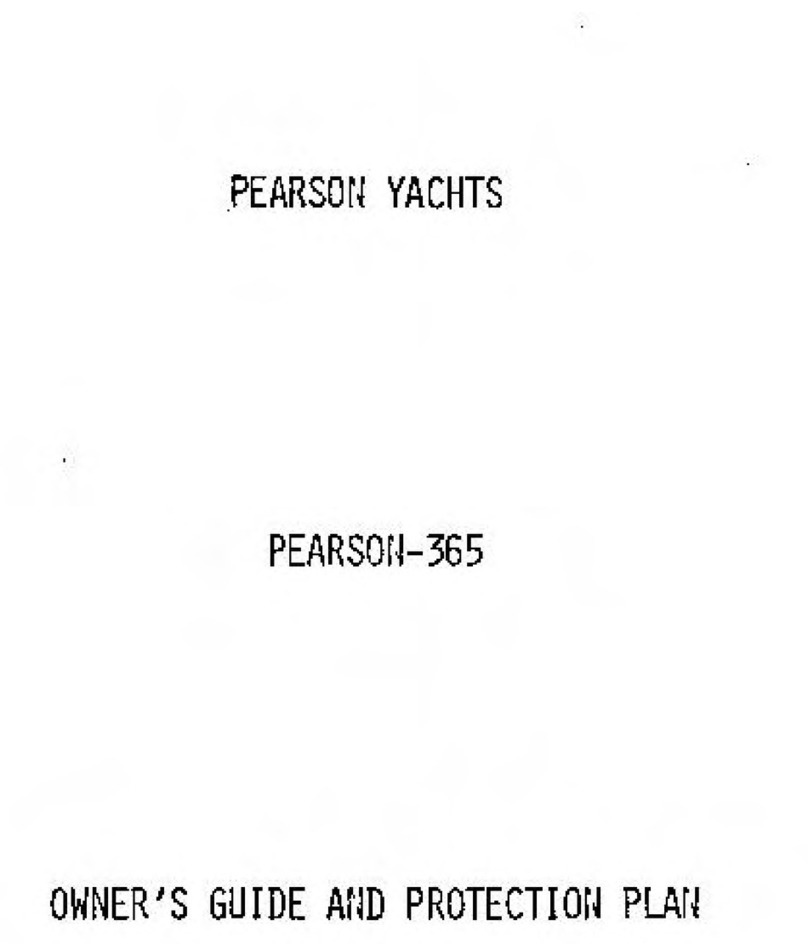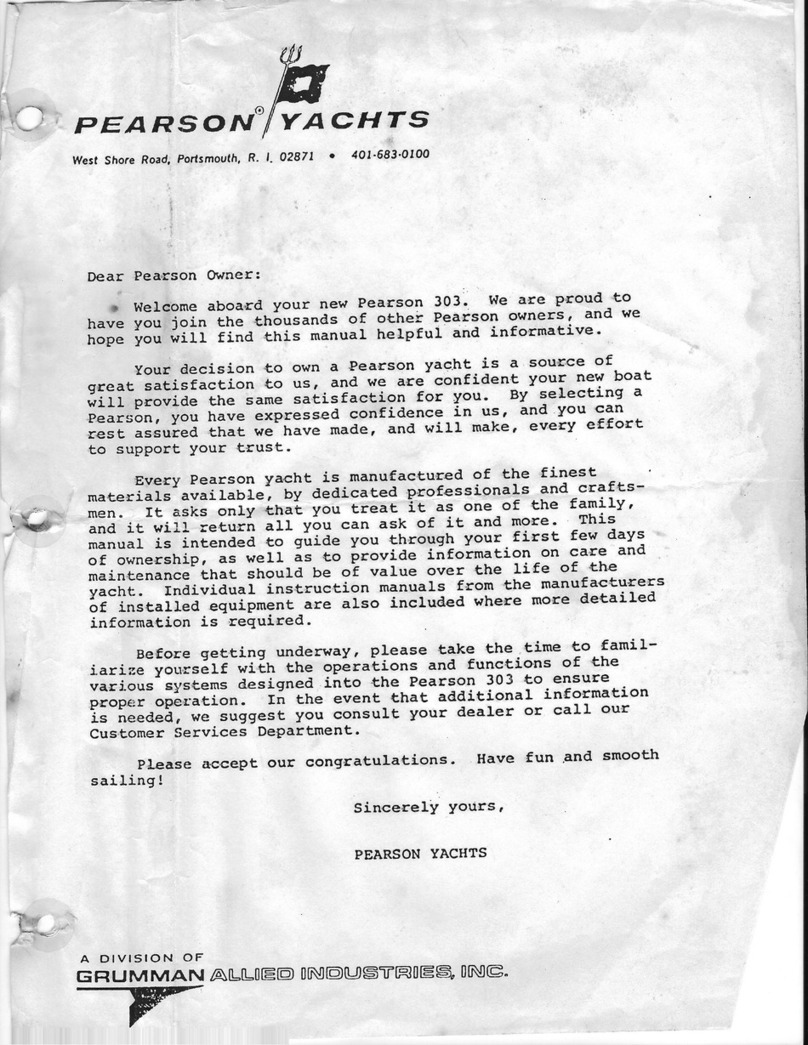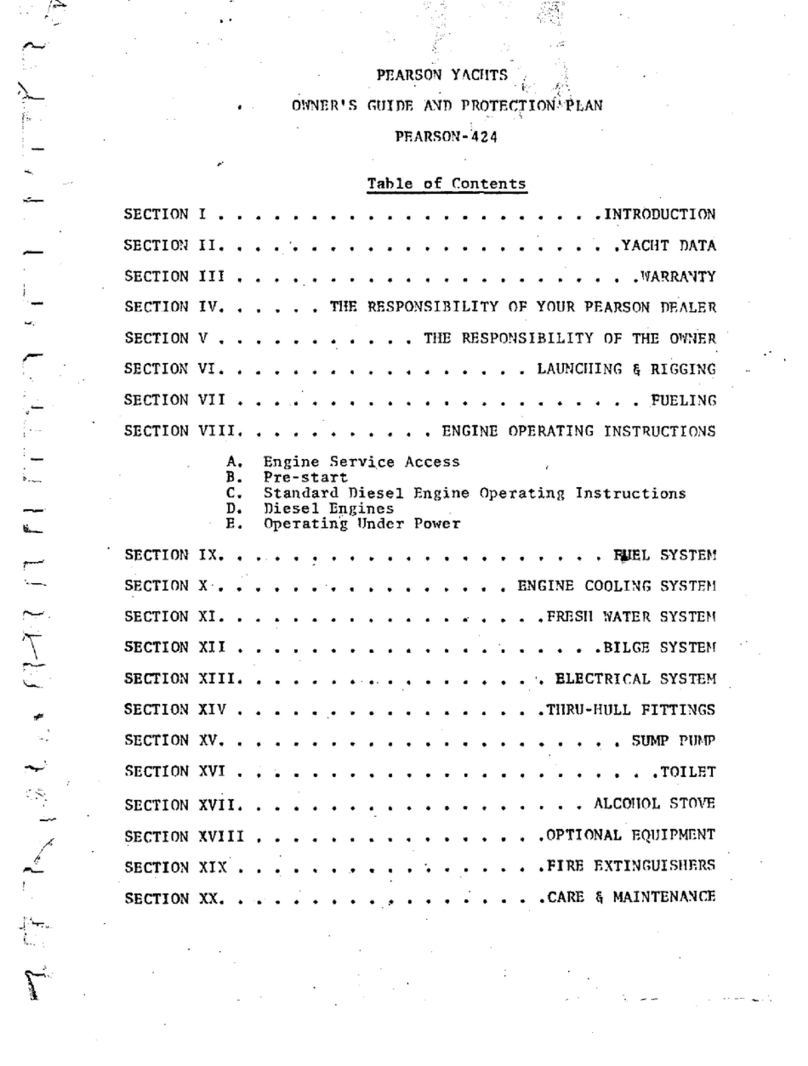
BATTERIES BELOW QUARTERBERTH, FWD END
BATTERY SELECT SWITCH QUARTERBERTH FRONT BETWEEN
ENGINE BOX AND BUREAU
DC ELECTRICAL PANEL ABOVE ICEBOX AT NAV STATION
AC ELECTRICAL PANEL ABOVE ICEBOX AT NAV STATION
SUMP PUMP BELOW VANITY
SUMP PUMP SWITCH HEAD LOCKER, FWD END
SUMP DISCHARGE VALVE BELOW PORT SETTEE, FWD END
PORT WATER TANK (20 gal.) BELOW PORT SETTEE, AFT END
STBD WATER TANK (20 gal.) BELOW STBD SETTEE, AFT END
PORT TANK "SHUT OFF" VALVE BELOW GALLEY SINK, PORT SIDE
STBD TANK "SHUT OFF" VALVE BELOW GALLEY SINK, STBD SIDE
FRESH WATER FILTER BELOW GALLEY SINK ON PRESSURE
WATER MANIFOLD
FRESH WATER PRESSURE PUMP BELOW GALLEY SINK
GALLEY SINK DRAIN BELOW GALLEY SINK
VANITY SINK DRAIN BELOW SETTEE, FWD END
ANCHOR LOCKER DRAIN ON BOW STEM
DECK DRAIN (PORT) SAIL LOCKER, FWD END
DECK DRAIN (STBD) LAZARETTE AREA, AFT OF
QUARTERBERTH BEHIND ACCESS
PANEL, STBD SIDE
COCKPIT DRAINS LAZARETTE AREA, AFT OF
QUARTERBERTH BEHIND ACCESS
PANEL, STBD SIDE
PROPANE BIN DRAIN LAZARETTE AREA, AFT OF
SAIL LOCKER BEHIND ACCESS
PANEL, STBD SIDE
ICEBOX DRAIN PUMP AT SINK, ACCESS DRAIN
FITTINGS BELOW ICEBOX
WATER FILL (PORT TANK) PORT SIDE DECK, MIDSHIP
WATER FILL (STBD TANK) STBD SIDE DECK, MIDSHIP
FUEL FILL COCKPIT COAMING, AFT PORT
END






